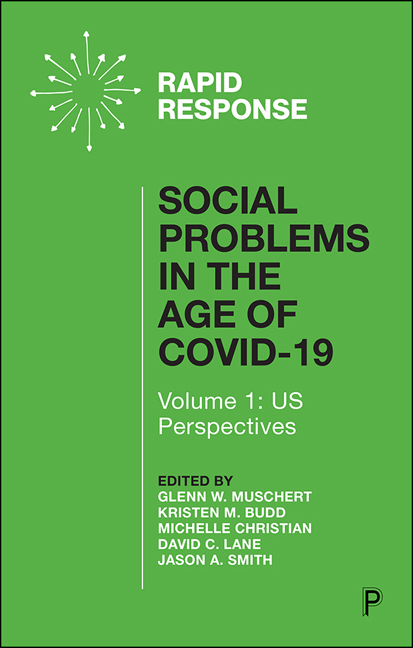7 - Experiencing Homelessness in the Time of COVID-19
Published online by Cambridge University Press: 23 March 2021
Summary
The Problem
The increasing rates of homelessness in the United States and Canada have been a growing social and health concern for several decades. On any given night, it is estimated that over 500,000 individuals in the United States and 35,000 individuals in Canada experience homelessness. It is well documented that individuals experiencing homelessness have higher morbidity and mortality rates than the general population. The social and health disparities that individuals experiencing homelessness encounter are known to many in the homeless-serving sectors. However, these extant disparities have increased, and become exposed because of the COVID-19 pandemic. The COVID-19 pandemic has increased the risk of individuals becoming homeless due to the economic instability it has created and, once homeless, there is an increased risk of contracting COVID-19. If individuals do contract the virus, the risk of severe outcomes is heightened due to the higher rate of underlying medical conditions such as cardiovascular disease and diabetes in homeless populations.
Currently, the primary public health measures to help curb the spread of COVID-19 are to mandate stay-at-home orders and social distancing. When stay-at-home orders are announced, there is an underlying assumption that individuals have a home. This is not the case for the hundreds of thousands of individuals experiencing homelessness in Canada and the US. These individuals use various spaces to stay safe, such as overnight emergency shelters, daytime drop-in centers, or sleeping in tent encampments. Many of these environments increase the risk of contracting and transmitting COVID-19. Homeless shelters and drop-in centers are generally crowded spaces, which makes physical distancing difficult. When physical and social distancing measures to reduce the spread of the virus are introduced to shelters, there are fewer spaces available; therefore, more individuals may end up in unsafe situations on the streets. This can make people experiencing homelessness even more vulnerable to COVID-19 because it is more difficult to self-isolate, maintain proper hand hygiene, and access testing when on the streets.
Along with the increased risk of contracting COVID-19 and severe outcomes related to the disease, the economic ramifications of public health measures employed to reduce the spread of the virus have increased the probability of becoming homeless.
- Type
- Chapter
- Information
- Social Problems in the Age of COVID-19 Vol 1Volume 1: US Perspectives, pp. 70 - 80Publisher: Bristol University PressPrint publication year: 2020



